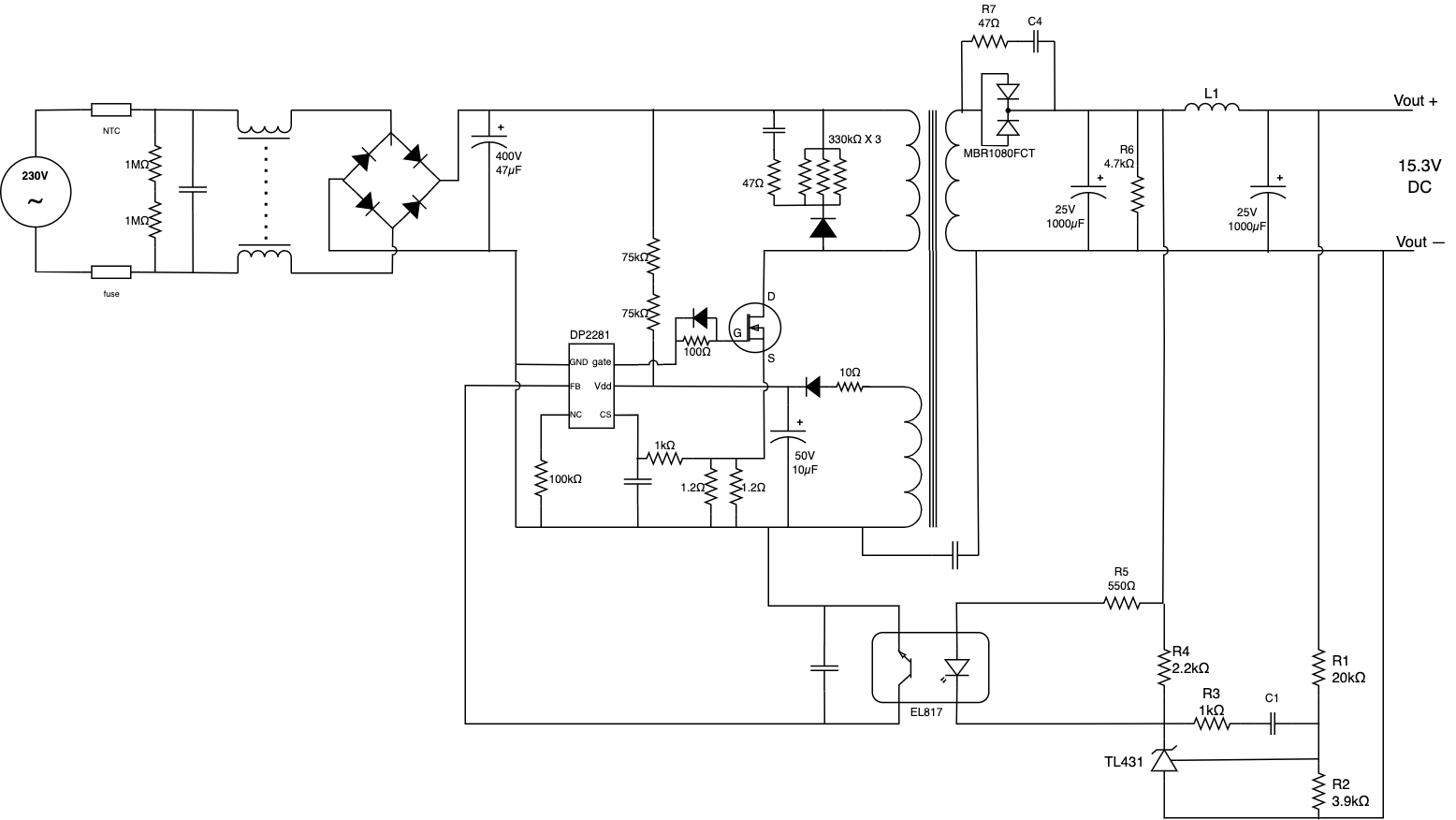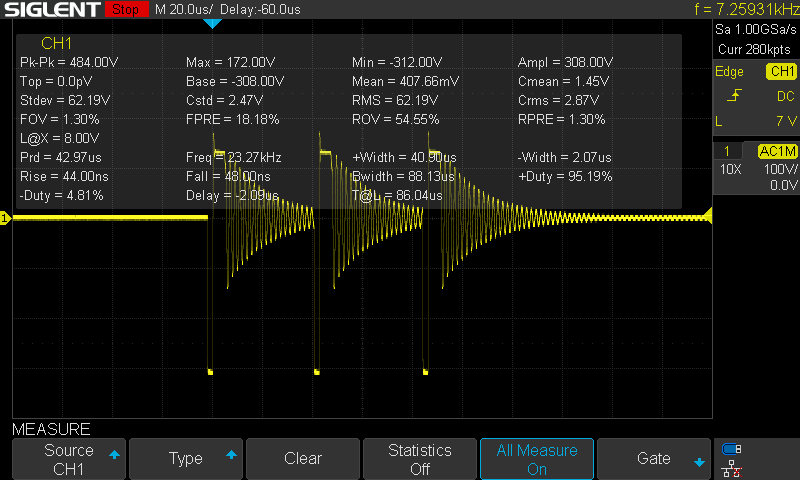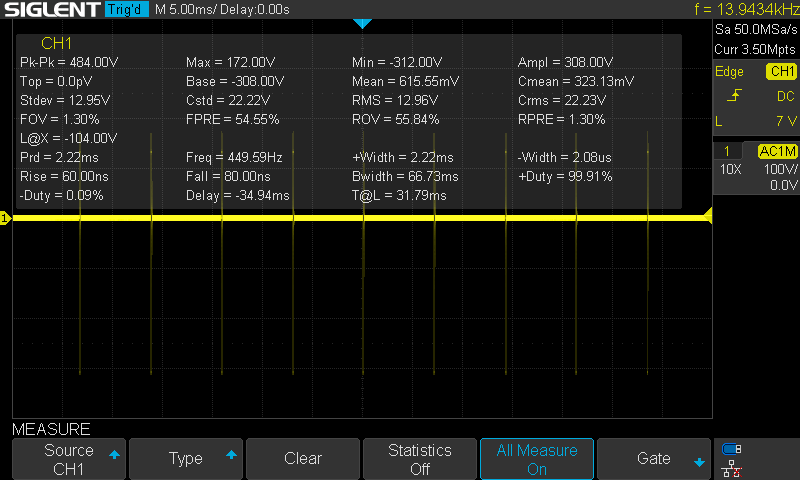In the process of attempting to modify the output voltage of an existing SMPS (see sketched circuit), I've come across unexpected waveforms of the step-down transformer (see two snapshots of primary coil, two time bases). I was expecting a square wave (instead of a "fading-ringing" occurring 3 times in sequence) oscillating at a frequency specified by the PWM controller (DP2281 with Fixed Switching Frequency of 65kHz). I was hoping someone could explain what's going on.
Thanks
P.S. This post is to help me progress with a previous post seeking help to modify the output voltage of a SMPS.



